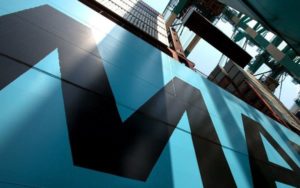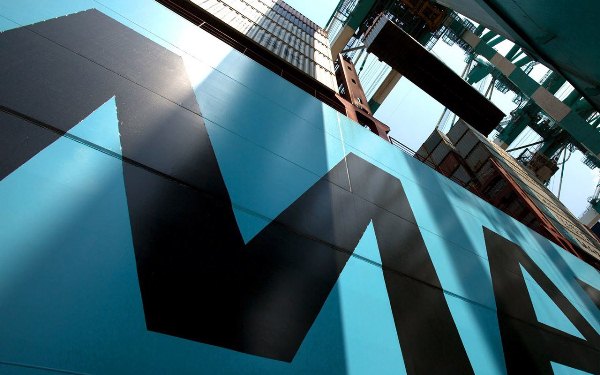 A.P. Moller-Maersk said it showed progress in the second quarter as it swung to profit, saw revenue growth, and realized synergies through further business integration.
A.P. Moller-Maersk said it showed progress in the second quarter as it swung to profit, saw revenue growth, and realized synergies through further business integration.
In a statement dated August 17, the Danish shipping conglomerate announced a second-quarter profit of US$26 million compared to a loss of $264 million in the same quarter last year, but said this result remained “unsatisfactory.”
Revenue grew 24% to $9.5 billion across segments, 5.7% excluding the effect from Hamburg Süd, Moller-Maersk said. Revenue growth was seen in key areas such as logistics & services, which among others was positively affected by increase in service of its customers supply chain management and in gateway & towage.
At the same time, the company said it realized synergies from the integration of Hamburg Süd and from the increased collaboration across existing transport, logistics and ports businesses, contributing positively to the profitability.
“With revenue up 24% in Q2, we continued to deliver strong growth. The acquisition of Hamburg Süd of course was a positive contributor to growth in our Ocean segment, and we are pleased with the organic growth in non-Ocean,” said Soren Skou, CEO of Moller-Maersk.
For the full year of 2018, Skou said they expect revenue of around $40 billion, up almost 50% since 2016.
“Profitability was significantly impacted by higher bunker prices in Q2 and remained at unsatisfactory levels. For the rest of the year we expect improvements in our profitability driven by lower unit cost and higher freight rates,” he continued.
The group delivered a sharp improvement in unit cost in ocean, after a first quarter that was negatively impacted by inflow of capacity from the acquisition of Hamburg Süd and network issues.
“Lower unit costs were mainly driven by a reduction in network costs in ocean, comprising network changes and increase in loaded volume,” said Moller-Maersk.
Furthermore, the revenue in ocean grew 25% to $7 billion in the second quarter, 0.6% excluding Hamburg Süd, and volumes grew 26%, or 4.3% excluding Hamburg Süd, which is in line with estimated market growth of around 4%.
However, group EBITDA for the second quarter declined 18% to $883 million, negatively impacted by increased bunker costs in ocean. “Combined with the development in freight rates and uncertainties related to trade tensions it led to an adjustment in the expectation for EBITDA for the full-year 2018 to reach in the range of USD 3.5-4.2bn,” said Moller-Maersk.
It added that the organic volume growth in ocean for the full year is still expected to be slightly below the estimated average market growth of 2% to 4% for 2018.
“The guidance continues to be subject to uncertainties due to the current risk of further restrictions on global trade and other factors impacting container freight rates, bunker prices and rate of exchange,” it stated.
Meanwhile Moller-Maersk has decided to pursue a separate listing of Maersk Drilling Holding on Nasdaq in 2019.
“Having evaluated the different options for Maersk Drilling, A.P. Moller-Maersk has concluded that listing Maersk Drilling as a standalone company presents the most optimal and long-term prospects for its shareholders, offering them the possibility to participate in the value creation opportunity of a globally leading pure play offshore drilling company with long-term development prospects,” it said in a separate release.





